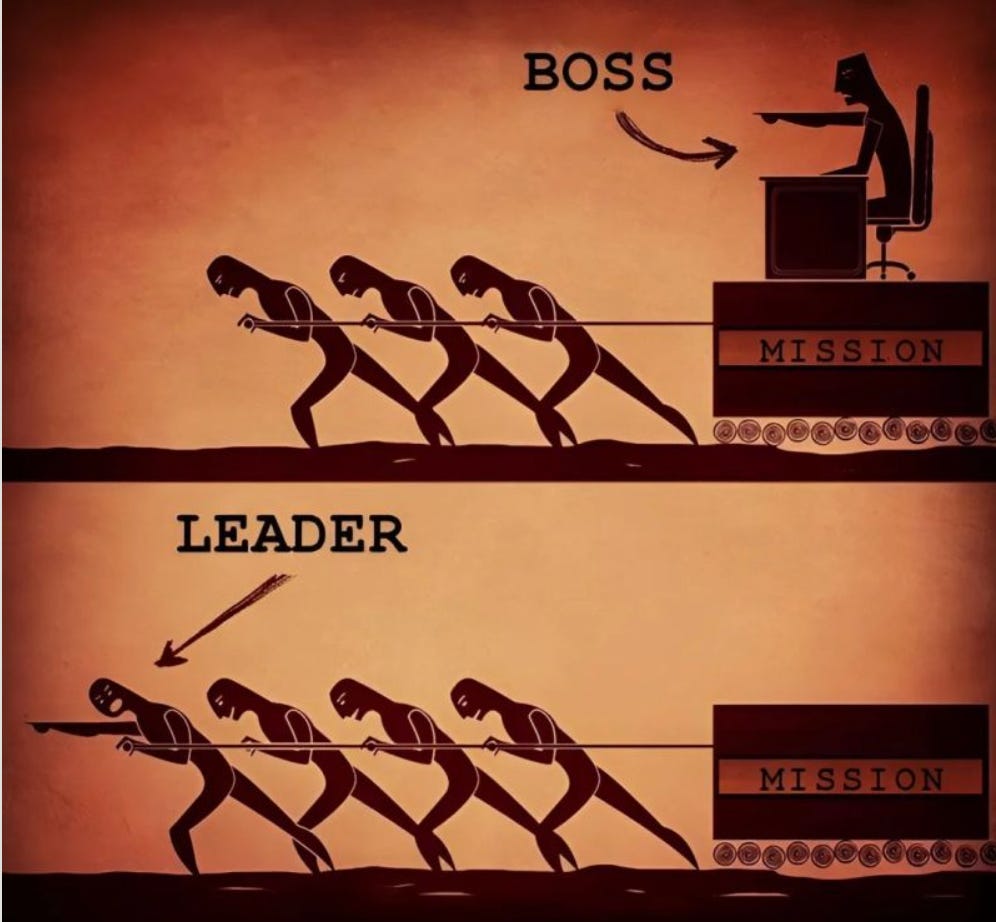There is quite a bit lost in this basic distinction. (And yes, I do mean “basic” in the way The Kids are using the word. I think. Unless I’m using it wrong, in which case, I just mean basic. Don’t worry, I’m super hip.)
Real-world leadership is nuanced; it blends elements of guidance from both the front and the back, rather than following a one-size-fits-all pattern. Reducing leadership to a single “good vs. bad” paradigm ignores the complexity of how effective leaders must balance hands-on involvement with oversight, vision, and delegation. Sometimes, leadership requires the leader to sit behind the boss’ desk.
This meme….
Ignores Contextual Leadership Styles: Most famously articulated by Hersey and Blanchard’s Situational Leadership (II) Model (1985), effective leadership depends on the maturity and competence of followers, as well as the specifics of the situation. By presenting a binary “boss vs. leader” perspective, the meme overlooks the nuanced idea that leaders must adapt their style—sometimes more directive, sometimes more supportive—based on situational factors.
Devalues Strategic Oversight: Mintzberg (1973) highlighted the importance of managerial roles such as “monitor” and “resource allocator,” which require stepping back from day-to-day tasks to see the bigger picture. A leader who is constantly on the front line may neglect essential strategic responsibilities, including scanning the external environment and coordinating long-term plans (Yukl, 2013).
Over-Simplifies Delegation: Proper delegation is not merely offloading tasks; rather, it is a critical skill that involves matching tasks to individuals’ strengths and providing the right level of support (Yukl, 2013). Hackman and Oldham’s (1976) Job Characteristics Model (still a favorite of mine!) underscores how well-designed delegation can increase team members’ autonomy and intrinsic motivation, which is lost in the meme’s simplistic portrayal of “pushing from behind.”
Neglects Expertise Differences: Goleman (2000) points out that effective leaders often rotate among different leadership styles—coercive, authoritative, affiliative, democratic, pacesetting, and coaching—depending on the situation and the expertise of team members. In many cases, the best approach is to support those who have specialized knowledge rather than insist the leader always be “out front.”
Assumes “Front-Line” Involvement is Best: Bass and Riggio’s (2006) work on transformational leadership highlights the importance of vision, intellectual stimulation, and individualized consideration—many of which occur off the front line. By implying the leader must always be physically leading the charge, the meme underestimates the value of behind-the-scenes actions like mentoring, strategic planning, and vision-setting.
I don’t hate the sentiment! Many in positions of authority could benefit from stepping out behind their desks and into the trenches of frontline work. But this meme – like most about Leadership – is still junk.




